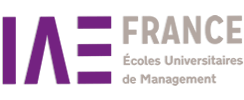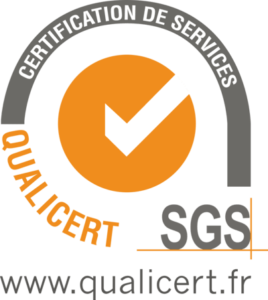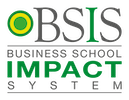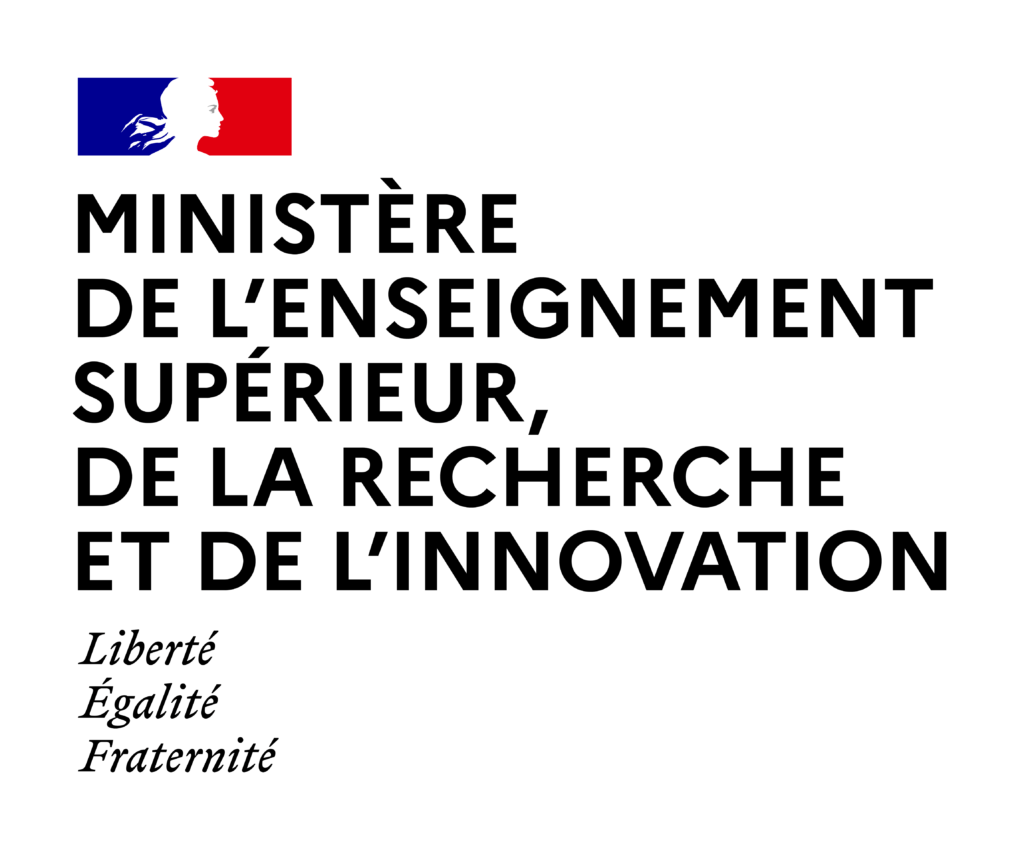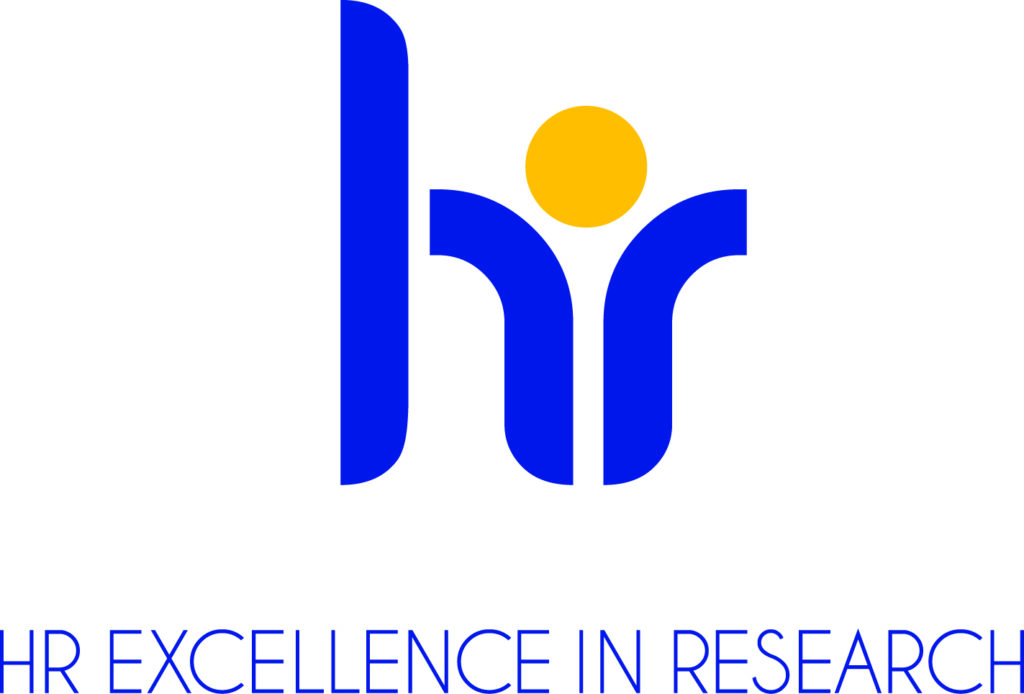Home / Course in English for exchange students
Course in English for exchange students
IGR-IAE Rennes offers a full program in management for non-French speaking exchange students, thus allowing students from all our partner universities to have a study experience in Rennes.
These management courses are free of charge for exchange students.
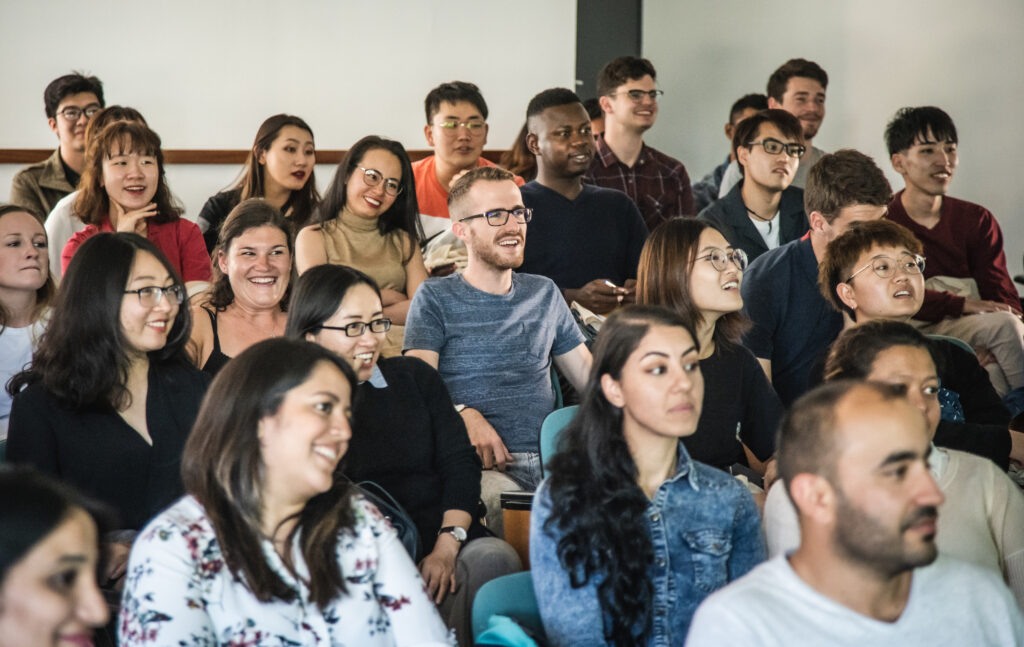
Objectives
In this programme, exchange students can choose from a wide range of courses in various fields of management: finance, management control, human resources, and marketing. Moreover, the programME particularly gives students more knowledge about France, its language and culture. This is also an opportunity to meet new friends and broaden their horizons.
With the exchange programme, students will get a good chance to develop a global perspective!
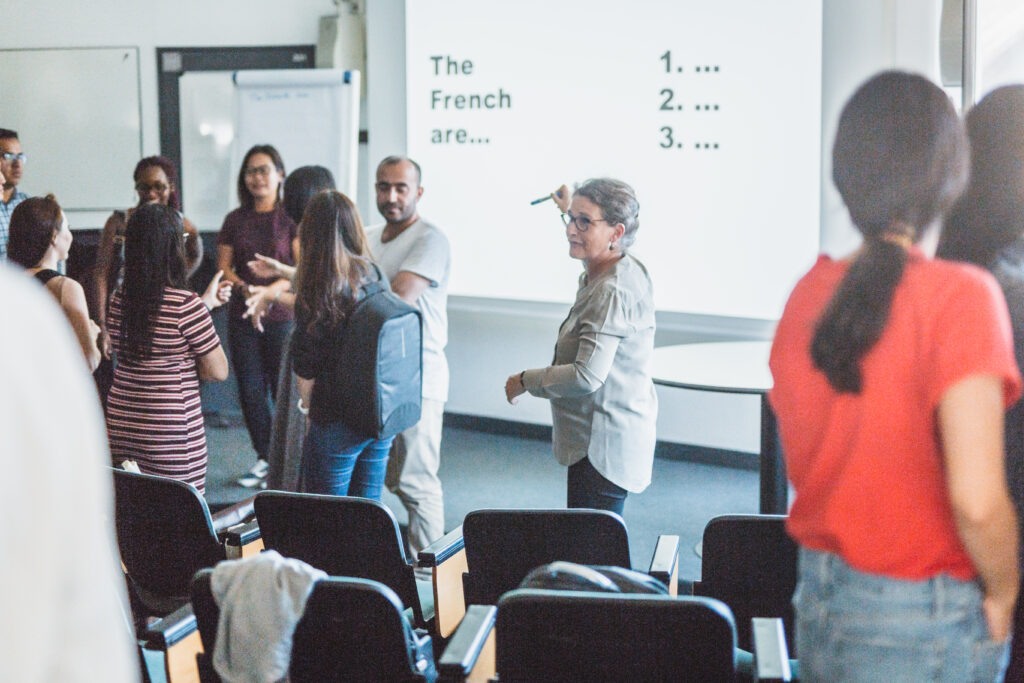
Programme
This programme represents 30 credits per semester (European standards), with 4 credits per course.
Classes are taught at Bachelor 3 or at Master 1 level. In the description below, Bachelor 3 courses are marked as level 3 and Master 1 courses are marked as level 4.
In the online course selection form (to be received from the incoming student coordinator), level 3 or level 4 students will be open to you depending on your academic level.
Semester 1
These courses are given at the CIREFE (Centre international rennais d’études de français pour étrangers) – Université de Rennes 2 – and organised by language level.
Total number of hours: 52
Course code: 5GGEX01U
https://siuaps.univ-rennes.fr/
Total number of hours: 13 minimum
Course code: 5GGEX02U
Objectives
This course aims to present the main concepts and levers that a marketing executive may
activate to
embody the positioning and stimulate the sales of a product/service (mainly on shorttermed
perspective).
Skills to be acquired
Be able to analyze basic marketing strategy (STP approach), identify and understand the
marketing
policy.
Program
Chapter 1 : the marketing strategy
1. Implementing the marketing strategy : decision support tools
2. The strategic marketing approach: segmentation targeting, positioning
Chapter 2: Product policy and portfolio management
1. Product policy
2. Product packaging and design
3. Portfolio management
4. Relevance of branding
Chapter 3: product retailing policy
1. Definition and modalities
2. Point-of-sale marketing
Chapter 4: Product pricing policy
1. Pricing definition and influencing factors
2. The notion of price elasticity
3. The pricing strategies
Chapter 5: Product promotion policy
1. The definition and forms of promotion
2. The objectives of promotion
3. Designing the promotion strategy (communication campaign)
Bibliography
1. Mercator 11e édition – Tout le marketing à l’ère numérique (2014) de Jacques Lendrevie et Julien Lévy
2. Marketing (2014), Sous la direction de Jean-Marc Ferrandi, Marie-Christine Lichtle, Dunod
Prerequisities
No
Assessment method
Written exam – 2h
Total number of hours: 18
Course code: 5GGGM02T
Objectives
1. To discover the scope of HR activities in an international context.
2. To develop awareness on cultural differences and the impact on HR policies.
3. To learn how to analyse problems and design HR policies in a collaborative way.
Skills to be acquired
- Using cultural differences theory to analyse contexts.
- Taking into account cultural differences in day to day actions
- Using collaborative practices to analyze problems and design solutions.
Program
1 . History of internationalisation :
– from Fordism to the network company
– forms of internationalisation : ethnocentric, geocentric, polycentric and impact on HR organisations and policies
Teaching method : lecture and review of international employee interviews.
2. Culture :
– definition of a culture, stereotypes, values.
– introduction to cultural differences theories (Hofstede, Hall, Trompenaars…)
– HR policies and cultural adaptation.
Teaching methods : perception exercices, build upon students own experiences, research articles readings.
3. Designing HR processes and policies in an international context :
– problem analysis exercice with co development tool
– group work to work out HR program or solutions to specific issues such as recruiting, managing interpersonal conflict, organizing work across boundaries, developping new subsidiaries abroad, …
Teaching methods
Experiment the collaborative practice of co development, research article to read and analyze. Feedback on students proposals
Assessment method
Continuous assessment (to be precised by the teachers).
Total number of hours: 18
Course code: 7GGBA01T
Skills to be acquired
- Gaining competencies to reflect companies´ international business activities critically
- Gaining decision-making-oriented competency (e.g., self-management)
- Ability to evaluate complex, innovative situations as they are typical of companies´ international business activities
Program
- Qualitative and quantitative trends in the international business environrnent
- Modes of foreign market entry
- Theoretical approaches for the explanation of different modes of foreign market entry
- Strategies of international companies
- Organization of international companies I: Archetypes of macro structures
- Organization of International companies Il: Empirical studies referring to strategy and structure of international companies
Teaching methods
Participants are expected contribute to the class through their comments, questions, and examples from their experience. Some readings may be assigned to supplement the in-class material. More specifically, the course will use the following teaching methods:
- Lectures
- Discussions of readings
- In-class exercises and simulations
Bibliography
- International Business: Strategy, Management, and the New Realities (4th Edition 2017) by Tamer Cavusgil, Gary Knight, John Riesenberger, Upper Saddle River 2017.
- International Business: Environments and Operations (13th Edition 20111) by John Daniels, Lee Radebaugh, Daniel Sullivan
- International Business: Competing in the Global Marketplace (11th Edition 2017) by Charles Hill
- International Dimensions of Organizational Behavior (5th Edition 2008) by Nancy J. Adler
Prérequisites
No specific prérequisites
Assessment method
Continuous assessment: written exam
Total number of hours: 21
Course code: 8GGBA34T
Objectives
This module aims to provide students with a fundamental understanding of accounting concepts, principles, and techniques used in preparing and analyzing financial statements. The course emphasizes the recording, summarizing, and reporting of financial transactions to enable users to make informed business decisions. Through a combination of theoretical knowledge and practical applications, students will develop the skills necessary to interpret financial data and communicate effectively in a business context.
Skills to be acquired
Throughout the course, students will develop the following skills:
- Accounting knowledge: Gain a solid foundation in accounting principles, concepts, and terminology.
- Technical proficiency: Acquire the skills to record transactions, prepare financial statements, and perform basic financial analysis.
- Analytical thinking: Develop the ability to analyze financial data and interpret the results for decision-making purposes.
- Problem-solving: Apply accounting principles to solve practical accounting problems and discrepancies.
- Communication: Enhance written and verbal communication skills to effectively convey financial information to stakeholders.
Program
- Introduction to Financial Accounting
- Definition and scope of financial accounting
- Role of financial accounting in business decision-making
- Users and stakeholders of financial information
- Main Financial Statements
- Balance Sheet
- Income Statement
- Cash Flow Statement
Exam
Written exam: 1h30
Total number of hours: 18
Course code: 7GGBA32T
Objectives
This module develops an understanding of issues related to the elements of costs and budgets. It develops abilities to prepare, analyze and interpret accounting information on cost elements in various cost systems. It also introduces budgeting techniques: planning, budgeting, forecasting and analysis. The cost and budgeting techniques employed to assist managers in their decision-making and to evaluate performance.
Skills to be acquired
Costing definitions to orient decision making
Be able to identify and apply the appropriate costing technique to a range of situations
Understand and implement the cost and pricing structure of the organization and its products/services.
Programme
An introduction to management Control
- Basic concepts of cost accounting
- Cost-volume-profit (CVP) models
- Activity Based Costing (ABC)
- Introduction to budget
Assessment method
Final exam: 1h30
Prerequisites
No
Total number of hours: 18
Course code: 7GGBA41T
Objectives
Acquire the mindset of an innovative project manager, by applying the tools/methods of problem exploration to the search for solutions, including concrete test phases.
Skills to be acquired
- An introduction to design thinking (identifying a problem, qualifying it and reformulating it).
- Learn about innovative project management and apply it to your own case: design applied to your life project (professional and personal).
- Navigate uncertainty in a pragmatic and structured way.
- Delivering results early, continuously and in a measured way vs. planning and producing only at the end (management vs. management vs. innovation).
- Knowing how to (re)qualify a problem to deal with it as accurately as possible.
- Using collective intelligence (team discussions and brainstorming).
- Mastering innovation tools such as mindmapping
Program
- Session1: introductory session – innovation, design thinking, team dynamics and motivational levers.
- Session2: rethinking your perception of a problem, in design mode; the fundamentals of project management and what we are not taught; Tool #1: your personal dashboard; Tool #2: understanding and identifying ‘flow’ in your activities.
- Session 3: Building your compass to guide your action (Tool #4); Tool #5: Co-development, to solve problems as a team.
- Session 4: Tool #6: Generating ideas through mindmapping.
- Session 5: Tool #7: building and comparing project trajectories (the 3 odysseys).
- Session 6: how to reformulate a problem.
- Session 7: mastering team brainstorming; Tool #8: analysing and integrating failure into your project.
- Session 8: the art of prototyping.
Each session is interspersed with phases of experimentation and personal work.
Assessment method
Continuous assessment
Total number of hours: 18
Course code: 7GGBA31T
Objectives
The aim of the course is to initiate students:
- To read and analyse different financial statements of companies
- To detect companies’ financial problems
- To find solutions to those problems
Skills to be acquired
The students will be able to:
- Read companies’ financial statements: balance sheet, income statement…
- Understand the main concepts used in financial analysis: profitability, earnings and margins, self-financing, investments, working capital, expenses, liabilities, assets…
- Learn about different sources of funding
- Evaluate the financial stringency of companies
Program
Chapter 1 : Financial statements: a reminder (balance sheet, income statement)
Chapter 2 : Financial equilibrium analysis (financial equilibrium indicators, ratio analysis)
Chapter 3 : Performance analysis (earnings and margins analysis, income statement ratio analysis, from net income to self-financing)
Assessment method
Written exam: 1h30
Prerequisites
Basic knowledge in general and financial accounting.
Total number of hours: 18
Course code: 7GGBA42T
Objectives
This course offers an understanding of fundamental principles of Corporate Finance and more specifically of financial decisions. The main goal is to help students to understand how firms meet their financial objectives using financial-decision making in business.
Skills to be acquired
By the end of this course, students should be able to:
- Understand the main objectives of Corporate Finance
- Understand the investment decisions
- Understand the different options for long-term financing
- Determine the optimal capital structure
1 – Introduction to Corporate Finance
2 – Valuation and Capital budgeting
3 – Financing decisions
Bibliography
Vernimmen, Quiry et Ceddaha.: Corporate finance, theory and practice, 2024
Prerequisites
Accounting knowledge (balance sheet, income statement, cash flow statement)
Assessment method
Written exam: 1h30
Total number of hours: 18
Course code: 7GGBA52T
Objectifs
This course aims to present the main concepts and levers that a marketing executive may activate to embody the positioning and stimulate the sales of a product/service (mainly on short-termed perspective).
Ce cours a pour objectif de présenter les principaux concepts et leviers qu’un responsable marketing peut actionner pour incarner le positionnement et stimuler les ventes d’un produit/service, essentiellement dans une perspective de court terme
Skills to be acquired
Be able to analyze basic marketing strategy (STP approach), identify and understand the marketing policy.
Savoir analyser les bases d’une stratégie marketing (approche SCP), identifier et comprendre une politique marketing (marketing-mix).
Program
Chapter 1 : the marketing strategy
- Implementing the marketing strategy : decision support tools
- The strategic marketing approach: segmentation targeting, positioning
Chapter 2: Product policy and portfolio management
- Product policy
- Product packaging and design
- Portfolio management
- Relevance of branding
Chapter 3: product retailing policy
- Definition and modalities
- Point-of-sale marketing
Chapter 4: Product pricing policy
- Pricing definition and influencing factors
- The notion of price elasticity
- The pricing strategies
Chapter 5: Product promotion policy
- The definition and forms of promotion
- The objectives of promotion
- Designing the promotion strategy (communication campaign)
Bibliography
1.Mercator 11e édition – Tout le marketing à l’ère numérique (2014) de Jacques Lendrevie et Julien Lévy
2.Marketing (2014), Sous la direction de Jean-Marc Ferrandi, Marie-Christine Lichtle, Dunod
Pre requisite
RAS
Assessment method
Continuous assessment
Total number of hours: 18
Course code: 7GGEX11U
Objectives
Understand the nature and skills of leading and leadership
Develop knowledge and understanding of healthy or High-Performance Teams
Learn about worldviews, what they are, how they are formed and why this is important to know
Explore worldviews of the students
Understand the importance and relevance of brain and behavioural science as it pertains to leading or engaging others and when experiencing change
Experience the World Cafe and Circle Practice as engagement methodologies
Develop an understanding of human dynamics and planning processes
Skills to be acquired
· Self-knowledge and development
· Leadership skills and practices
· Team skills and practices
· Employee, team or public engagement practices
· Understanding the process of change and how to help people deal with change
· Listening skills
· The ability to create powerful questions to guide meetings and conversations
· Planning skills to address a challenging conversation
Teaching program
1. Module 1 : An Introduction to Leadership, High-Performance Teams and an Introduction to Worldviews
2. Module 2 : The Worldview Intelligence Six Dimensions Framework
3. Module 3 : Behavioural and Brain Science and the Amygdala Hijack
4. Module 4 : The World Cafe : introduction, experience and instruction on how to do one
5. Module 5 : Stuck in the Status Quo : Understanding and Addressing the Role of Loss in Change
6. Module 6 : Reflective Listening and othe Leadership Practices
7. Module 7 : Patterns and Practices Related to Understanding and Working with Human Dynamics
Bibliography
No advance reading is required.
Prerequisites
None
Teaching assessment
A mutliple choice test administered during the last module in the course.
Assessment method
Project
Total number of hours: 15
Course code: 9GGPS32T
*ONLY FOR STUDENTS WHO STAY BOTH SEMESTRES*
Objectives
- Develop a critical, nuanced and contextualised view of intercultural management.
- Develop a shared understanding of otherness.
Skills to be acquired
- Understanding interculturality in a variety of contexts (international, interpersonal, intergenerational, inter-/intra-cultural)
- Identifying cultural layers within an organisation and a team
- Decoding intercultural situations by applying an interpretation grid based on otherness.
Program
The relationship with otherness is inscribed and constructed in interactions, situations and contexts. Incomplete, stereotyped consideration of ‘culture’ and a de facto denial of its plurality give rise to misunderstandings, incomprehension, blockages, irritations and conflicts.
This course aims to explore the different cultural strata and their interrelationships, in order to provide keys to understanding and useful frames of reference for the practice of intercultural management.
Through an approach based on discovery, construction, anticipation and defusing, this course aims to co-construct a reading grid on otherness as a practical method for intercultural management.The main themes of the course are :
. Theme 1 – Differences between national cultures: international intercultural otherness and its markers
. Theme 2 – Differences in inter-company cultures: intercultural otherness and its variability according to organisational contexts
. Theme 3 – Intercultural differences according to status: roles and cultures of employees and employers
. Theme 4 – Intercultural differences through the prism of emotionality: interactions, regulations and otherness .
. Theme 5 – Intercultural differences between individuals, the result of the encounter between the individual (personality, cognition) and his or her environment .
. Theme 6 – Intercultural differences between individuals, seen from the angle of ‘working together’: interculturality, diversity and inclusion (gender, intergenerational, disability) .
. Theme 7 – Intercultural differences in the course of a career: a dynamic perspective through changes in status and career, migration and professional trajectories .
Bibliography
. Chanlat, J., Pierre, P. (2018). Le management interculturel : Évolution, tendances et critiques. EMS Éditions.
. Chevrier, S. & Segal, J. (2011). Coordination des équipes multiculturelles au sein des multinationales : Des acteurs en quête de modes d’emploi. Revue française de gestion, 212, 145-156.
. Chevrier, S. (2012). Le management international : une perspective francophone. Annales des Mines – Gérer et comprendre, 110, 71-72.
. Chevrier, S. (2012). Pas de coopération internationale sans prise en compte des cultures : Commentaires à propos de « La compétence interculturelle est-elle un concept utile ? ». Annales des Mines – Gérer et comprendre, 107, 95-97.
. Chevrier, S. (2018). Comment mieux gérer vos équipes multiculturelles. Gestion, 43, 72-76.
. Chevrier, S. (2019). Le management interculturel. Presses Universitaires de France.
. Dickason, R. (2022). “‘Discretion remains the rule’: A multilevel study of emotional requirements in a public hospital”. In Ronald H. Humphrey, Neal M. Ashkanasy, Ashlea C. Troth (eds.) Research on motion in Organizations, Volume 17: Emotions and Negativity (pp. 115-140), Emerald Group, ISSN 1746-9791.
. Dickason, R., Ashkanasy, N., Hampton-Musseau, D. (2021). A History of Emotional Intelligence in Work Settings, Academy of Management Proceedings, 2021 (1), pp.12470.
. Dupriez, P. & Simons, S. (2002). La résistance culturelle : Fondements, applications et implications du management interculturel. De Boeck Supérieur.
. Guénette, A. M., Mutabazi, E., Von Overbeck Ottino, S., Pierre. P. (Dirs) (2014) Management interculturel, altérité et identités. L’Harmattan.
. Meier, O. (2019). Management interculturel. Dunod.
. Pasquier, D., Valéau, P. (2015). Adhésion à la norme d’internalité et clairvoyance normative : un passage par les contingences de la socialisation, Psychologie du Travail et des Organisations, 21(3), 260-285.
. Valéau, P. (2004). Gérer l’implication dans le respect des différences. Des associations aux autres organisations, HDR, www.valeau.com
. Valéau, P., Gangloff, B. & Louart, P. (2019). La dimension normative de l’évaluation des savoir-être : étude de la conformité perçue par rapport salarié-idéal. RIMHE : Revue Interdisciplinaire Management, Homme & Entreprise, 34,8, 30-50.
Prerequisites
None
Assessment method
Continuous assessment
Total number of hours: 18
Course code: 9GGIM02T
*ONLY FOR STUDENTS WHO STAY BOTH SEMESTRES*
Objectives
- Develop a critical, nuanced and contextualised view of intercultural management.
- Develop a shared understanding of otherness.
Skills to be acquired
- Understanding interculturality in a variety of contexts (international, interpersonal, intergenerational, inter-/intra-cultural)
- Identifying cultural layers within an organisation and a team
- Decoding intercultural situations by applying an interpretation grid based on otherness.
Program
The relationship with otherness is inscribed and constructed in interactions, situations and contexts. Incomplete, stereotyped consideration of ‘culture’ and a de facto denial of its plurality give rise to misunderstandings, incomprehension, blockages, irritations and conflicts.
This course aims to explore the different cultural strata and their interrelationships, in order to provide keys to understanding and useful frames of reference for the practice of intercultural management.
Through an approach based on discovery, construction, anticipation and defusing, this course aims to co-construct a reading grid on otherness as a practical method for intercultural management.The main themes of the course are :
. Theme 1 – Differences between national cultures: international intercultural otherness and its markers
. Theme 2 – Differences in inter-company cultures: intercultural otherness and its variability according to organisational contexts
. Theme 3 – Intercultural differences according to status: roles and cultures of employees and employers
. Theme 4 – Intercultural differences through the prism of emotionality: interactions, regulations and otherness .
. Theme 5 – Intercultural differences between individuals, the result of the encounter between the individual (personality, cognition) and his or her environment .
. Theme 6 – Intercultural differences between individuals, seen from the angle of ‘working together’: interculturality, diversity and inclusion (gender, intergenerational, disability) .
. Theme 7 – Intercultural differences in the course of a career: a dynamic perspective through changes in status and career, migration and professional trajectories .
Bibliography
. Chanlat, J., Pierre, P. (2018). Le management interculturel : Évolution, tendances et critiques. EMS Éditions.
. Chevrier, S. & Segal, J. (2011). Coordination des équipes multiculturelles au sein des multinationales : Des acteurs en quête de modes d’emploi. Revue française de gestion, 212, 145-156.
. Chevrier, S. (2012). Le management international : une perspective francophone. Annales des Mines – Gérer et comprendre, 110, 71-72.
. Chevrier, S. (2012). Pas de coopération internationale sans prise en compte des cultures : Commentaires à propos de « La compétence interculturelle est-elle un concept utile ? ». Annales des Mines – Gérer et comprendre, 107, 95-97.
. Chevrier, S. (2018). Comment mieux gérer vos équipes multiculturelles. Gestion, 43, 72-76.
. Chevrier, S. (2019). Le management interculturel. Presses Universitaires de France.
. Dickason, R. (2022). “‘Discretion remains the rule’: A multilevel study of emotional requirements in a public hospital”. In Ronald H. Humphrey, Neal M. Ashkanasy, Ashlea C. Troth (eds.) Research on motion in Organizations, Volume 17: Emotions and Negativity (pp. 115-140), Emerald Group, ISSN 1746-9791.
. Dickason, R., Ashkanasy, N., Hampton-Musseau, D. (2021). A History of Emotional Intelligence in Work Settings, Academy of Management Proceedings, 2021 (1), pp.12470.
. Dupriez, P. & Simons, S. (2002). La résistance culturelle : Fondements, applications et implications du management interculturel. De Boeck Supérieur.
. Guénette, A. M., Mutabazi, E., Von Overbeck Ottino, S., Pierre. P. (Dirs) (2014) Management interculturel, altérité et identités. L’Harmattan.
. Meier, O. (2019). Management interculturel. Dunod.
. Pasquier, D., Valéau, P. (2015). Adhésion à la norme d’internalité et clairvoyance normative : un passage par les contingences de la socialisation, Psychologie du Travail et des Organisations, 21(3), 260-285.
. Valéau, P. (2004). Gérer l’implication dans le respect des différences. Des associations aux autres organisations, HDR, www.valeau.com
. Valéau, P., Gangloff, B. & Louart, P. (2019). La dimension normative de l’évaluation des savoir-être : étude de la conformité perçue par rapport salarié-idéal. RIMHE : Revue Interdisciplinaire Management, Homme & Entreprise, 34,8, 30-50.
Prerequisites
None
Assessment method
Continuous assessment
Total number of hours: 18
Course code: 8GGAM13T
Semester 2
These courses are given at the CIREFE (Centre international rennais d’études de français pour étrangers) – Université de Rennes 2 – and organised by language level.
Total number of hours: 52
Course code: 6GGEX01U
https://siuaps.univ-rennes.fr/
Total number of hours: 13 minimum
Course code: 6GGEX02U
Objectives
The main objective of this course will be to raise awareness of the role of logistics in distribution and e-commerce as well as logistics strategies in order to optimize distribution channels.
Acquired skills
Knowledge: this course aims to provide students with:
- Good basic training in logistics flow management in distribution and e-commerce networks
- The tools necessary to implement effective logistics strategies according to the characteristics of e-commerce
Expertise :
- Ability to analyze cases and simulate situations, define and apply a logistics strategy.
- Know-how: Taking initiative and responsibility, collective work.
Teaching program
• The evolution of distribution and e-commerce and the management of logistics flows
• Logistics and distribution channels
• Logistics and inter-organizational relations
Prerequisites
Mastery of basic notions in management sciences (strategy, marketing, logistics, etc.)
Assessment method
Case
Total number of hours: 10
Course code: 8GGMK13T
Objectives
Businesses are under constant pressure and face a rapid change in their competitive environment. Successful performance in such an environment requires an increased understanding of the company’s strategy. Those who do not meet this challenge are quickly sanctioned by the market.
Skills to be acquired
This course is intended for students with first skills outside management or with a generalist profile. the purpose of the course is to acquire a transversal decision-making autonomy, a systemic methodology of analysis, an aptitude to the structuring of due diligence.
Program
Introduction: mastering key concepts of strategy.
- Analysis of the global environment (pivot variables)
- Analysis of the competitive environment ;
- Analysis of the decision environment
Chap 1. The systemic diagnosis of the organization, a renovated approach
The main strategic levers faced with ecological and digitalization constraints
Strategic interactions and the impact on diagnosis and diagnosis documents
Chap 2. Structure of management levers
- Analysis of the strategic capacity and projection of the strategic potential of the organization
- Levers of competitiveness, margin policy, relational policy
Bibliography
Exploring strategy, Johnson, G., Whittington, R., Scholes, K., 12 ed. (2019), Pearson Education
How smart connected produces are transforming companies, M. Porter , HBR (2015)
Digital business strategy: Toward a next generation of insights”, Barhdwaj A. (2013), MIS Quarterly
Assessment method
Personnel project
Total number of hours: 18
Course code: 7GGBA11T
Objectives
Examine current HR trends & priorities
Examine the characteristics of various organizational cultures.
Examine how culture is affected by changes in the internal and the external environments
Examine change management approaches from a people and a process perspective
Examine change management practices and processes including those that:
Direct change
Plan change
Guide change
Examine how career & talent development contribute to resilient organizations
Examine how Employee Value Propositions & Employer Brands contribute to resilient organizations.
Examine current HR issues arising from adoption and implementation of AI tools, including:
Labour/talent pools
Bias in recruiting/selection
Skills to be acquired
· Presentation Skills
· Situational analysis skills
· Human resource management skills including change management and organizational culture development
Bibliography
- Albrecht, S. L., Bakker, A. B., Gruman, J. A., Macey, W. H., & Saks, A. M. (2015). Employee engagement, human resource management practices and competitive advantage: An integrated approach. Journal of organizational effectiveness: People and performance, 2(1), 7-35.
- Bridges, W., & Mitchell, S. (2000). Leading transition: A new model for change. Leader to leader, 16(3), 30-36.
- Burnes, B. (2004). Kurt Lewin and the planned approach to change: a re‐appraisal. Journal of Management studies, 41(6), 977-1002.
- Gartner (2023). Top 5 Priorities for HR Leaders in 2024, https://www.gartner.ca/en/human-resources/trends/top-priorities-for-hr-leaders#:~:text=Leader%20and%20manager%20development%20tops,your%20function%20against%20your%20peers.
- Groysberg, B., Lee, J., Price, J., & Cheng, J. (2018). The leader’s guide to corporate culture. Harvard Business Review, 96(1), 44-52.
Prerequisites
N/A
Assessment method
Case Study 20% – Group Analysis and Presentation
Total number of hours: 10
Course code: 8GGRH31T
Objectives
To know how to identify and analyse corportate strategy.
Skills to be acquired
Master the fundamentals on business strategy, understand the different strategic positions, be able to take strategic decisions in business situations.
Program
Introduction
Main definitions
The strategic approach : leader’s role, mission & corporate positionning
Strategic management
Structure & strategy
Strategic segmentation & Multibusiness companies
Strategic decision making
Generic strategies
External diagnostic
Pestel
Swot
Porter’s 5 forces
Blue Ocean Strategy
Internal Diagnostic
Strategic capability : resources & competences, dynamic capabilities
Activity portfolio : BCG et McKinsey
Strategic directions
Business development
Innovation
Internationalization
Bibliography
Strategor – Toute la stratégie d’entreprise, 7ème édition, 2016
L’avantage concurrentiel – Comment devancer ses concurrents et maintenir son avance, Michael Porter, 2003
Managing for the future, Peter Drucker, 2013
Blue Ocean Strategy, W. Chan Kim, Renee Mauborgne, 2015
Prerequisites
No
Assessment method
Written Exam: 1h30
Total number of hours: 18
Course code: 6GGGM02T
Objectives
This course aims to present the main concepts and levers that a marketing executive may activate to embody the positioning and stimulate the sales of a product/service (mainly on short-termed perspective).
Skills to be acquired
Be able to analyze basic marketing strategy (STP approach), identify and understand the marketing policy.
Prerequisites
None. However having an academic background in Marketing and Business Administration in general may be helpful to follow this module.
Program
Chapter 1 : the marketing strategy
- Implementing the marketing strategy : decision support tools
- The strategic marketing approach: segmentation targeting, positioning
Chapter 2: Product policy and portfolio management
- Product policy
- Product packaging and design
- Portfolio management
- Relevance of branding
Chapter 3: product retailing policy
- Definition and modalities
- Point-of-sale marketing
Chapter 4: Product pricing policy
- Pricing definition and influencing factors
- The notion of price elasticity
- The pricing strategies
Chapter 5: Product promotion policy
- The definition and forms of promotion
- The objectives of promotion
- Designing the promotion strategy (communication campaign)
Bibliographie
Kotler, P., Keller, K. L., Armstrong, G., Armstrong, G., & Keller, K. (2016). Marketing Management, 15th global edition. England: Pearson Educationn Limited.
Assessment method
Continuous assessment (quiz) + group marketing project + final written exam (1h30)
Total number of hours: 18
Course code: 8GGBA11T
Objectives
The aim of the course is to master the global strategy of a company
Skills to be acquired
The students will be able to make decisions in order to optimize a company activities (market share, production, profitability…)
Program
Simulation game
Bibliography
Management books
Prerequisites
No
Assessment method
Simulation game with results evaluation
Total number of hours: 25
Course code: 8GGBA22T
Objectives
Introduce students to the fundamental concepts of CSR, Corporate Governance and ESG. Situate the discussion of corporate ethics in the current scenario and its main implications in the business environment.
Skills to be acquired
Students learn to base their decisions on ethical codes, adopt social responsibility policies and consolidate the company’s commitment to a sustainable business vision.
Program
1. Ethical business, theoretical frame and ethical foundations.
2. CSR, Governance and sustainable business.
3. Best Practices in CSR.
4. Intangibles and the creation of value.
5. Fundamental concepts and international guidelines.
6. How to implement an CSR program, building projects in CSR.
Assessment method
Continuous assessment
Total number of hours: 18
Course code: 8GGAM22T
Objectives
The principle objective of this course is to assist students to develop an initial understanding of supply chain management and logistics. Secondly, students are invited to reflect on some of the changes in the organization of global supply chains over the last half-century and the concomitant economic, social and environmental impacts. The third objective is to give students some tools enabling them to manage logistics and supply chain issues. Specifically, the forecasts of future demand and the production planning and control.
Skills to be acquired
The students will be able to (help) drive associated decision processes in actual industrial, distribution or service provision contexts.
Program
1. Global Freight Management
2. Introduction to Global Supply Chain
3. Global Supply Chain Network
4. How to manage a Global Supply Chain : Risk Mitigation plan
Bibliography
– Christopher, M. (2005) Logistics and Supply Chain Management, London: Pearson.
– Lambert, D. M. (2008). Supply chain management: processes, partnerships, performance. Supply Chain Management Inst.
– Jacoby, D. (2009). Guide to Supply Chain Management, London: Profile Books.
– Chopra, S. and Meindl, P. (2010) Supply Chain Management: Strategy, Planning and Operation, London: Pearson
Assessment method
Continuous assessment
Total number of hours: 18
Course code: 8GGBA31T
Objectives
The aim of the course is to learn and use the different ways to collect and analyse data.
Skills to be acquired
The students will be able to collect and analyze qualitative and quantitative data.
Program
1. Observation, ethnographic technics including participating
2. Semi-directive interviews
3. Quantitative survey.
Bibliography
Denzin and Lincoln (1994) Handbook of qualitative research, Sage
Valéau & Gardody (2016) La communication du journal de bord
Prerequisites
No
Assessment method
Continuous assessment
Total number of hours: 18
Course code: 8GGBA02T
Objectives
This course is an introduction to European Union law.
Skills to be acquired
To understand the institutional and legal workings of the European Union and how European law is monitored.
Programme
The following topics will be covered: the development of the European Union, the legal foundations of European integration, the operation of the European institutions, the powers of the European Union, the sources of European Union law, the principles of the internal market, European citizenship, the control of European law, European competition law, etc.
Bibliography
Peers, Steve, European Union Law, Fourth edition, Oxford University Press, 2023
Treaties https://eur-lex.europa.eu/collection/eu-law/treaties /treaties-force.html
Prerequisites
As the course is given in English, a good level of English is necessary.
Assessment method
MCQ or individual oral
Course code: 6GGEX14U
Objectives
This module develops an understanding of the business intelligence workflow from end-to-end. It develops abilities to build the first reports and understand the fundamentals of Power BI. It is focused on introducing users to the fundamentals of Power BI and DAX.
It also introduces Data architecture techniques such as the relational models.
Skills to be acquired
Be able to navigate into Power BI and create impacting reports based on data.
Learn the Power BI Basic, as you progress through the course, you’ll have access to hands-on exercises that can hone your skills.
Program
Getting Started with Power BI
Quick refresh on transforming Data
Create DAX expressions to enhance 4 the power bi data mode
Visualizing Data
Collaborate using the Power BI Service
Assessment method
Continuous assessment
Prerequisites
No
Total number of hours: 18
Course code: 8GGBA04T
Objectives
This module develops an understanding of the business intelligence workflow from end-to-end. It develops abilities to build the first reports and understand the fundamentals of Power BI. It is focused on introducing users to the fundamentals of Power BI and DAX.
It also introduces Data architecture techniques such as the relational models.
Skills to be acquired
Be able to navigate into Power BI and create impacting reports based on data.
Learn the Power BI Basic, as you progress through the course, you’ll have access to hands-on exercises that can hone your skills.
Program
Getting Started with Power BI
Quick refresh on transforming Data
Create DAX expressions to enhance 4 the power bi data mode
Visualizing Data
Collaborate using the Power BI Service
Assessment method
Continuous assessment
Prerequisites
No
Total number of hours: 18
Course code: 8GGBA14T
Objectives
To know how to identify and analyze corporate strategy for innovative organizations.
Skills to be acquired
Master the fundamentals on business strategy, understand the different strategic positions, and be able to take strategic decisions on uncertain contexts.
Program
Introduction
Main definitions
The strategic approach: leader’s role, mission & corporate positioning
Strategic management
Structure & strategy
Strategic segmentation & Multi-business companies
Strategic decision making
Generic strategies
External diagnostic
Pestel & Swot
Porter’s 5 forces
Blue Ocean Strategy
Internal Diagnostic
Strategic capability: resources & competences, dynamic capabilities
Activity portfolio analysis: BCG et McKinsey
Strategic directions
Business development & innovation
Assessment method
Report/oral presentation
Prerequisites
No
Total number of hours:18
Course code: 8GGB034T
Objectives
This module develops an understanding of issues related to the elements of Data Analysis. It will take you through the fundamentals of the data preparation and will help you understand and explore fundamental methods, frameworks and techniques of business analytics.
Skills to be acquired
Be able to collect, prepare, transform, and analyze data in a business environment.
Be able to assist the finance team to prepare financial data analysis and process.
Program
- Overview of Power Query (Query Editor User Interface, the Ribbon (Home, Transform, Add Column, View Tabs)
- Collecting Data
- Transforming Data (first steps in M Language)
- Analyze Data
- Overview of automation possibilities in Microsoft environment with Power Automate
Assessment method
Continuous Assessment
Prerequisites
No
Total number of hours: 21
Course code: 8GGBA44T
Objectives
The course “Architecture of Information Systems and Accounting” aims to acquaint students with the fundamental principles of information systems (IS), emphasizing their role, management, and security in an accounting context. Students will explore how IS can be strategically aligned with business objectives and will learn tools and techniques for managing IS projects.
The curriculum also covers essential aspects such as IS architecture, data management, and information systems security.
Skills to be acquired
Understand the fundamental concepts and the vocabulary associated with information systems.
Program
Introduction to Information Systems
- Definitions and key concepts
- The roles of information systems in business
- Types of information management systems
Strategic Alignment of IS
- Business strategies and alignment with IS
IS Project Management
- Phases of the IS project life cycle
- Tools and techniques for IS project management
IS Architecture
Databases and Information Management
- Key concepts in data management
- Tools and techniques for data management
IS Security
- Threats and risks to IS security
- Tools and techniques for managing IS security
IS Performance Management
Assessment method
Continuous assessment
Prerequisites
No
Total number of hours: 21
Course code: 8GGBA54T
Objectives
This module develops an understanding of the business intelligence workflow from end-to-end. It develops abilities to build the first reports and understand the fundamentals of Power BI. It is focused on introducing users to the fundamentals of Power BI and DAX.
It also introduces Data architecture techniques such as the relational models.
Skills to be acquired
Be able to navigate into Power BI and create impacting reports based on data.
Learn the Power BI Basic, as you progress through the course, you’ll have access to hands-on exercises that can hone your skills.
Program
- Getting Started with Power BI
- Quick refresh on transforming Data
- Create DAX expressions to enhance 4 the power bi data mode
- Visualizing Data
- Collaborate using the Power BI Service
Assessment method
Continuous assessment
Prerequisites
No
Total number of hours: 21
Course code: 8GGBA64T
Objectives
The unparalleled acceleration in the development of information and communication technologies has given rise to the concept of digital transformation. This transformation is taking place in companies at all levels and in all functions, including marketing.
This transformation is changing the rules of the game and creating new challenges for marketers, in order to consistently deliver value to their stakeholders.
Skills to acquire
At the end of this course, students will be able to:
– Understand the context and challenges of digital transformation as applied to marketing;
– Define and understand the key concepts related to digital marketing;
– Understand and critically evaluate the role of technology and its usefulness in marketing practice;
– Establish a strategy and implement a digital marketing project, based on a real-life situation.
Program
Chapter 1: The definition and parameters of digital marketing: context of emergence, variety of media and the digital ecosystem
Chapter 2: Digital marketing strategy: characteristics, applications and business model
Chapter 3: The practice of digital marketing: tools and methods
Bibliography
Kingsnorth, S. (2022). Digital marketing strategy: an integrated approach to online marketing. Kogan Page Publishers.
Pre requisites
Marketing fundamentals
Assessment method
Group or individual report + continuous assessment
Total number of hours: 18
Course code: 8GGBA01T
Objectives
Objectives:
Understand the talent recruitment process in a modern professional environment.
Explore best practices in recruitment and talent acquisition strategies.
Examine techniques and tools used in the selection and recruitment process.
Analyze current challenges and emerging trends in talent acquisition.
Understand the importance of Employer Branding in talent recruitment and retention processes.
Skills to be acquired
Ability to design and implement effective recruitment and talent acquisition strategies.
Skills in analyzing recruitment needs and evaluating candidates.
Mastery of recruitment tools and technologies, including online platforms and social networks.
Ability to collaborate with different departments to identify and attract top talent.
Communication skills to engage and retain potential candidates.
In-depth understanding of Employer Branding and its impact on recruitment and talent retention.
Program
Introduction to Talent Acquisition:
- Definitions and key concepts.
- Strategic importance of talent acquisition in organizations.
Recruitment Planning:
- Analysis of recruitment needs.
- Development of job profiles and skills.
Recruitment Strategies:
- Traditional and innovative approaches.
- Use of social networks and technologies.
Selection Process:
- Candidate evaluation.
- Interviews and evaluation techniques.
Talent Integration:
- Onboarding and integration of new employees.
- Talent retention strategies.
Employer Branding:
- Definitions and key concepts.
- Creation and management of a strong employer brand.
- Use of social media and internal initiatives to strengthen the employer’s image.
- Measurement of the impact of Employer Branding on recruitment and talent retention.
Case Studies and Analysis:
- Analysis of real cases in different sectors.
- Study of best practices and lessons learned.
Future Perspectives:
- Emerging trends in recruitment and talent acquisition.
- Adaptation to technological and societal changes.
Assessment method
Cas studies and presentations.
Participation
Prerequisites
No
Total number of hours: 18
Course code: 8GGBA84T
Assessment method
Continuous assessment
Total number of hours: 21
Course code: 8GGBA94T
Assessment method
Continuous assessment
Total number of hours: 21
Course code: 8GGB004T
Objectives
This course is designed to equip students with the essential principles of innovation and knowledge management, focusing on both organizational dynamics and the role of HR. It encompasses a blend of theoretical groundwork and practical case studies. The seminar aims to empower students to grasp organizations’ strategic and entrepreneurial challenges. This involves a comprehensive analysis of the key stakeholders, their action frameworks, and the challenges they encounter.
Skills to be acquired
Develop a conceptual understanding of innovation and knowledge management concepts.
Acquire skills for conducting in-depth analyses of organizations and networks, particularly in terms of knowledge and innovation.
Demonstrate the ability to implement strategic action frameworks, emphasizing leadership across multicultural teams and within international companies.
Cultivate the entrepreneurial skills necessary for adapting to uncertain contexts and fostering a culture of continual improvement through meaningful value creation for organizations and the society.
Program
1. Introduction: origins of the concept, definitions
2. Innovation as a core process
3. People & Innovation: creating leadership
4. Knowing and knowledge: fostering creativity
5. Innovation & Entrepreneurial ecosystems
6. Managing knowledge & innovation in multicultural firms
Assessment method
Report and participation in class
Prerequisites
No
Total number of hours: 18
Course code: 8GGB014T
Contacts
Pom Jactin
Incoming exchange students coordinator
Tél. +33 2 23 23 60 06
Laura SABBADO DA ROSA
Vice-Dean of International Affairs


